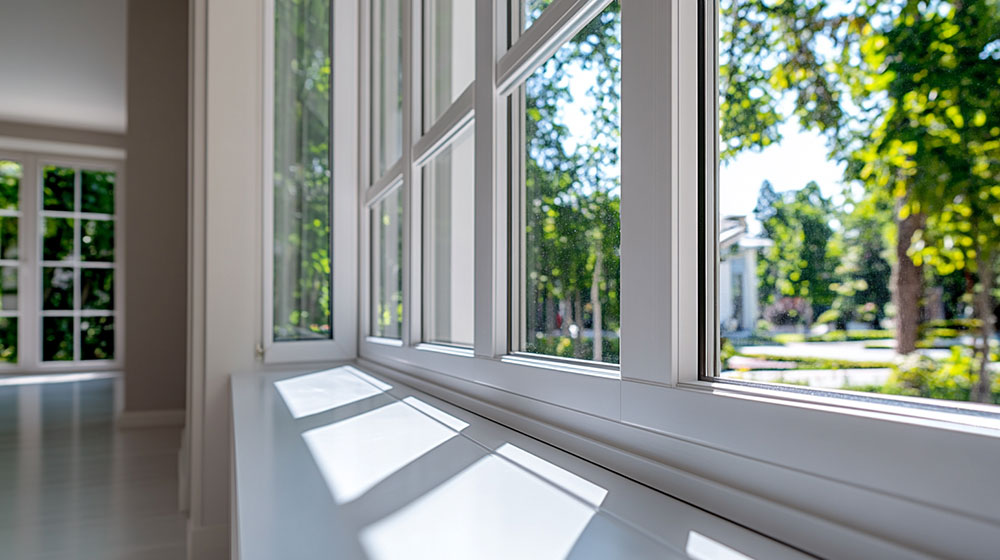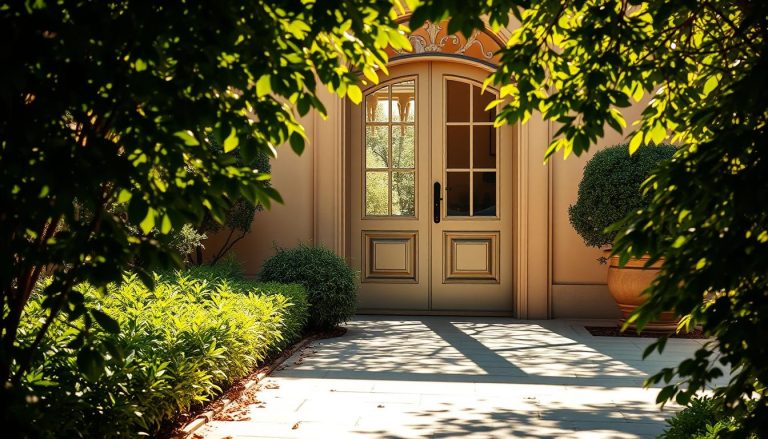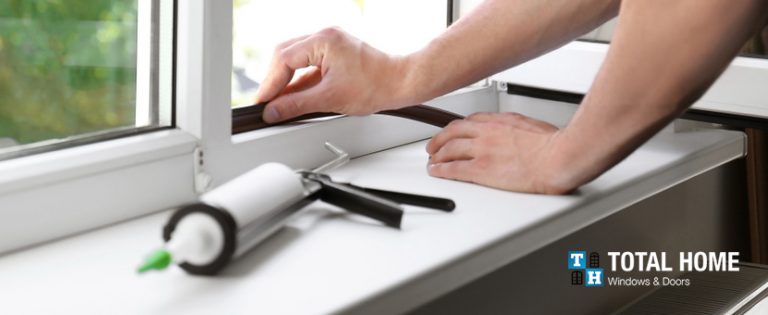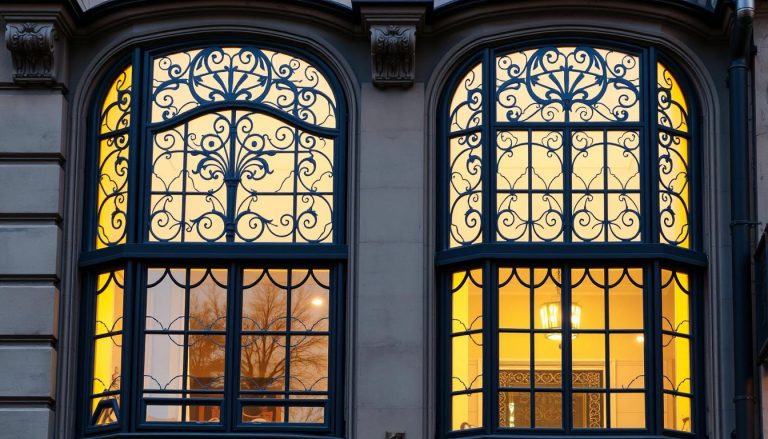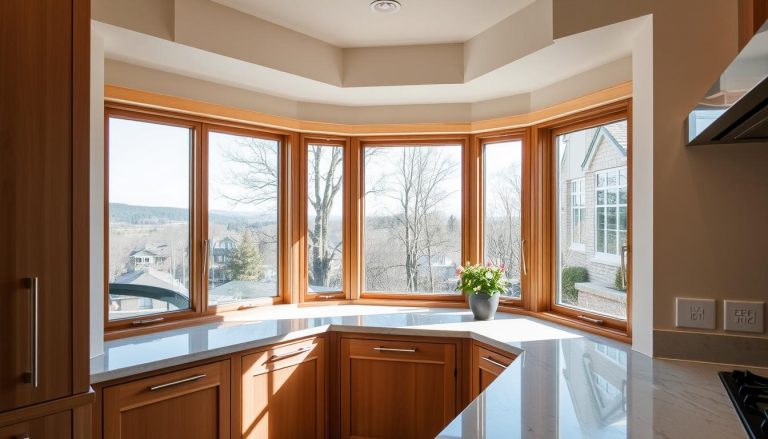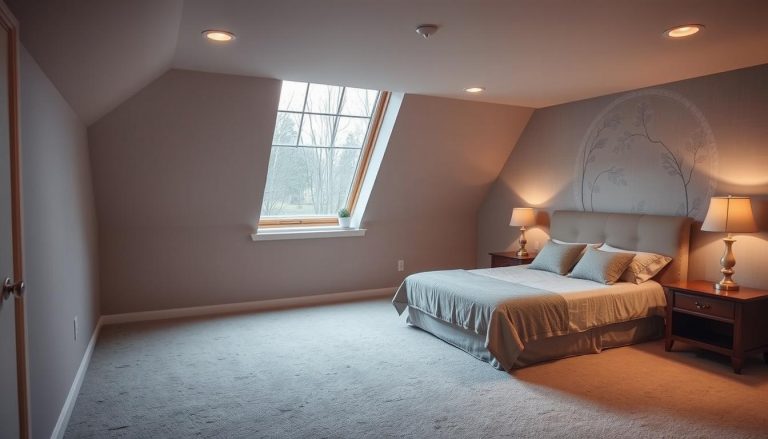As a Canadian homeowner, understanding the various parts of your windows is essential when considering replacements, repairs, or simply maintaining your home’s integrity. With our harsh climate conditions, from freezing winters to humid summers, having knowledge of window components can help you make informed decisions that will impact your home’s comfort, energy efficiency, and overall value.
Window Replacement Near Me
Window Frame Anatomy
The window frame is the foundation of any window installation. It’s the outermost structural part that supports all other components and connects the window to your home’s wall.
"Understanding your window frame composition is crucial when selecting the right windows for your home. Different materials perform differently in our Canadian climate, with vinyl being particularly popular due to its excellent insulation properties and durability in extreme weather conditions." — Cherry Jian, Sales Consultant
Key Frame Components:
- Frame: The complete outer structure that surrounds the entire window
- Head: The horizontal part at the top of the frame
- Jamb: The vertical sides of the frame
- Sill: The horizontal bottom piece of the frame (also called the window sill)
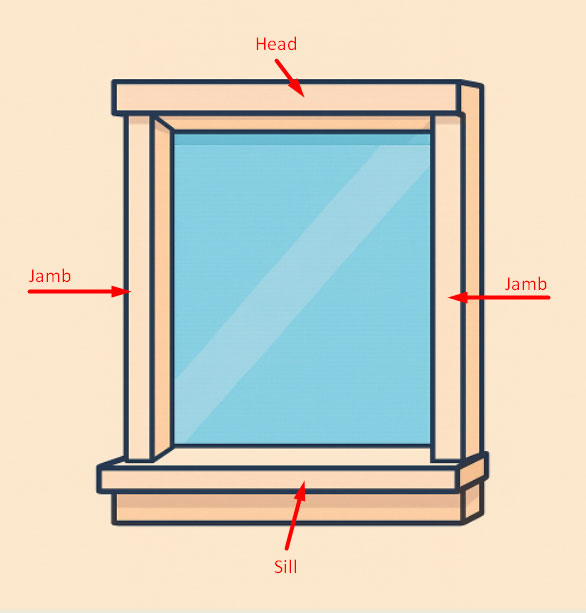
At Total Home Windows and Doors, we manufacture our frames using premium uPVC materials that are specifically engineered for Canadian weather conditions. Our frames are designed to prevent air infiltration and provide superior insulation.
Frame Materials Comparison
| Material | Insulation | Durability | Maintenance | Cost |
| Vinyl (uPVC) frame | Excellent | Excellent | Low | Moderate |
| Wood frame | Very Good | Good | High | High |
| Aluminum frame | Poor | Excellent | Low | Moderate |
| Fiberglass frame | Excellent | Excellent | Low | High |
Find related services
Window Sash Components
The sash is the movable part of the window that holds the glass panes. In certain window types, like double-hung windows, you’ll find both a top sash and a bottom sash that can operate independently.
"Many homeowners don't realize that the sash design significantly impacts window operation and longevity. Our Total Seal technology reinforces the top corners—typically the weakest points—with an integrated lockpoint fastened directly to the window frame." — Eugene Siukayev, Project Manager
Primary Sash Parts:
- Stiles: The vertical parts of the sash
- Rails: The horizontal parts of the sash (top rail and bottom rail)
- Check Rail: Where the bottom rail of the top sash meets with the top rail of the bottom sash
- Sash Tilt Pin: Allows the sash to tilt inward for easy cleaning (in tilt-in windows)
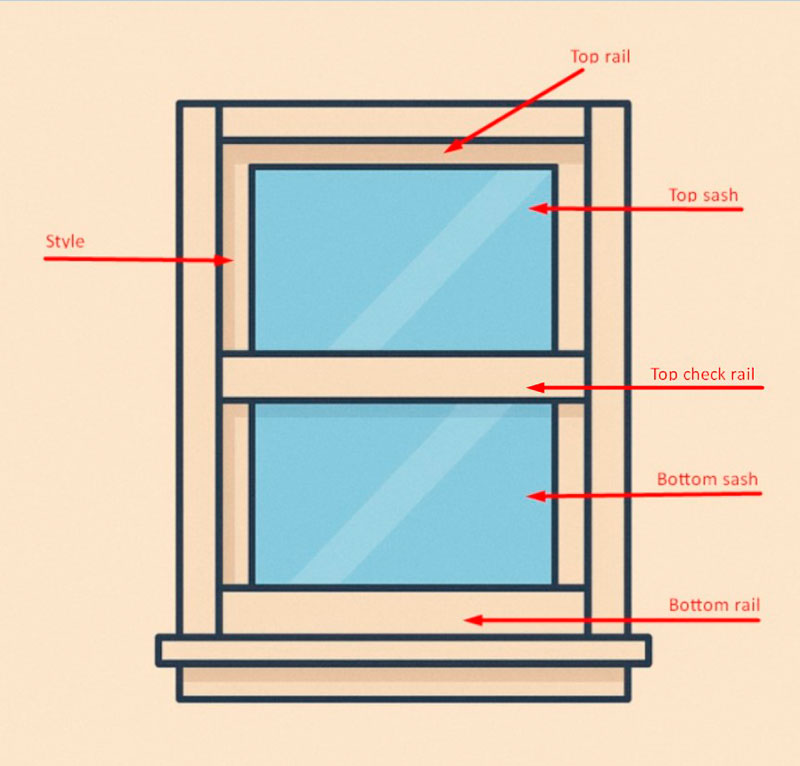
For homes seeking maximum energy efficiency, understanding how the sash moves and locks is crucial. Our casement windows feature multi-point locking systems that secure the sash at multiple points for superior air sealing and security.
Glass Components: Beyond the Pane
The glass portion of your window is where most technological innovations have occurred in recent decades, dramatically improving energy efficiency and comfort.
Glass Types and Components:
- Single Pane Windows: Consist of a single layer of glass (rarely used in new installations)
- Double Pane Glass: Two panes with insulating space between them
- Triple Pane Glass: Three panes for maximum insulation
- Low-E Coatings: Low emissivity coatings that reflect infrared light
- Inert Gas: Argon or krypton gas fills between panes for improved insulation
- Spacers: Materials that separate and seal multiple panes
"When I consult with clients about energy efficient windows, I always emphasize that the glass package makes up about 70% of the window and has the most significant impact on energy performance. In the Greater Toronto Area, we recommend at minimum double pane with Low-E coating and argon gas for optimal performance." — Daniel Klein, Project Manager
Performance Comparison: Glass Options
| Glass Type | Insulation Value | Light Transmission | Sound Reduction | Relative Cost |
| Single Pane | Poor | Excellent | Poor | Low |
| Double Pane | Good | Very Good | Good | Moderate |
| Double Pane with Low-E | Very Good | Good | Good | Moderate-High |
| Triple Pane | Excellent | Good | Excellent | High |
| Triple Pane with Low-E | Superior | Good | Excellent | Premium |
Window Hardware and Operation
The hardware components allow your window to function properly, providing security and ease of use.
Essential Hardware Components:
- Handles/Cranks: Allow operation of the window
- Locks/Latches: Secure the window when closed
- Hinges: Allow the window to swing open (in casement or awning windows)
- Balance System: In single or double hung windows, helps the sash move up and down smoothly
- Cam Pivot: Helps the sash tilt in for cleaning
- Jamb Liners: Guide the sash movement along the tracks
At Total Home Windows and Doors, we’ve implemented innovative hardware solutions like our Total Seal lock point system, which improves security and structural strength by preventing air infiltration in the top corner of the window—often a weak point in window design.
Our Encore Operators are designed with functionality and aesthetics in mind. The full-flip folding handle prevents collapse during use, while the snap-fit cover provides greater flexibility and protection against dirt and debris—small details that make a big difference in day-to-day use.
Common Window Types and Their Unique Parts
Different window styles feature unique components specific to their operation.
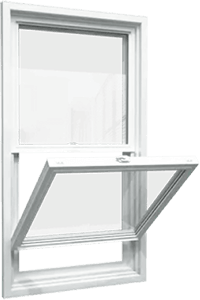
Single Hung Windows
In a single hung window, only the bottom sash moves while the top sash remains fixed.
Unique Components:
- Balance systems to support the weight of the movable sash
- Tilt latches (in tilt-in models)
- Fixed upper sash
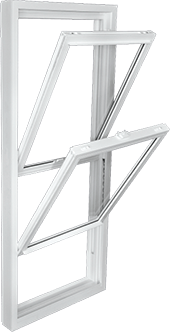
Double Hung Windows
Both sashes can move in double hung windows, offering more ventilation options.
Unique Components:
- Balance systems for both sashes
- Check rail where two sashes meet
- Tilt mechanisms for both sashes to facilitate cleaning
- Sash locks at the meeting rail
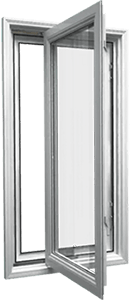
Casement Windows
Casement windows hinge on one side and open outward like a door.
Unique Components:
- Crank mechanism
- Hinges (usually on the side)
- Multi-point locking systems
- Friction stays to hold the window open
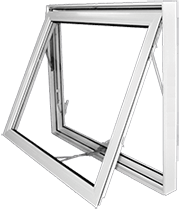
Awning Windows
Similar to casement windows but hinged at the top.
Unique Components:
- Top hinges
- Supporting arms
- Locking mechanisms at the bottom

Picture Windows
Fixed windows that don’t open, designed primarily for views and light.
Unique Components:
- Fixed frame
- Direct glazing (no sash)
- Typically larger glass area
Decorative and Functional Elements
Beyond the essential components, windows may include decorative and functional elements that enhance their appearance and performance.
Divided Lites and Grilles
These decorative pieces give the appearance of multiple small panes (divided lites) within a larger piece of glass:
- True Divided Lites: Actual separate pieces of glass
- Simulated Divided Lites: Grilles applied to the surface of the glass
- Grilles Between Glass (GBG): Dividers sealed between the panes
- Removable Grilles: Can be taken off for cleaning
Muntins and Mullions
Often confused, these are different structural elements:
- Muntin Bars: The dividers between individual panes of glass within a sash
- Mullions: Structural elements that join two or more windows together
Installation Components
Proper installation is critical for window performance, and several components facilitate proper installation.
- Nailing Fin: Extends from the frame to attach to the house structure
- Brick Mould: Trim that covers the gap between the window and exterior wall
- Flashing: Materials that prevent water infiltration around the window opening
- Drip Cap: Directs water away from the top of the window
- Sealants: Prevent air and water infiltration around the perimeter
Energy Efficiency and Window Parts
Understanding how different components contribute to a window’s overall energy efficiency can help you make informed decisions when selecting replacement windows.
How Window Parts Increase Energy Efficiency:
- Frame Material: Insulated frames reduce thermal transfer
- Multi-Pane Glass: Additional panes create insulating air spaces
- Low-E Coatings: Factory applied coatings reflect heat while allowing light
- Gas Fills: Inert gases between panes slow heat transfer
- Warm-Edge Spacers: Reduce conduction and prevent condensation
- Weather-stripping: Creates tight seals between moving parts
- Locking Mechanisms: Ensure tight closure and prevent air leakage
Our energy-efficient windows at Total Home Windows and Doors utilize advanced technology to help Canadian homeowners combat rising energy costs while increasing comfort.
Choosing the Right Window Parts for Your Home
When selecting windows for your Canadian home, consider these factors:
- Climate Considerations: Choose components rated for your specific climate zone
- Home Style: Select parts that complement your home’s architectural style
- Budget: Balance initial cost with long-term energy savings
- Maintenance Requirements: Consider the time and cost of maintaining different materials
- Energy Efficiency Goals: Select components that help meet your efficiency targets
Frequently Asked Questions
What is the difference between window glass types?
Window glass comes in single, double, or triple panes with various coatings. Modern window glass often includes Low-E coatings and inert gas fills between panes to reduce heat transfer and increase energy efficiency in Canadian homes.
What exactly is a picture window?
A picture window is a large, fixed panel window designed to maximize views and natural light. Unlike operational windows, picture windows don’t open but provide excellent energy efficiency through their fixed design and uninterrupted glass surface.
What is the horizontal piece at the top of a window called?
The horizontal piece at the top of a window is called the head. This structural component forms part of the frame and supports the window’s weight while connecting to the wall’s header above the window opening.
How do I plan a window replacement project?
Planning a window replacement project requires measuring existing openings, selecting appropriate window styles, understanding energy performance requirements, and choosing between full-frame or insert installation methods. Professional consultation is recommended for optimal results.
What causes leaky windows and how can they be fixed?
Leaky windows typically result from worn weatherstripping, failed seals, or improper installation. Fixes range from replacing weatherstripping and reapplying caulking to installing new windows with better sealing technology like our Total Seal system.
What is a fixed panel in a window system?
A fixed panel is a non-opening section of a window that’s permanently sealed within the frame. Often used alongside operational windows, fixed panels provide unobstructed views while maintaining energy efficiency through their immovable, weathertight design.
What function does a glazing bead serve in windows?
The glazing bead is a trim piece that secures the glass within the sash or frame. This small but critical component ensures the window glass remains firmly in place while providing a finished appearance and proper seal around the edges.
How are decorative elements incorporated into modern windows?
Decorative elements like grilles, muntins, and custom glass patterns enhance a window’s aesthetic appeal. These features can be integrated between glass panes, applied to surfaces, or created through authentic divided lites to match your home’s architectural style.
What are the main components of a window?
The main components of a window include the frame (head, jamb, sill), sash (stiles and rails), glass unit, hardware (handles, locks, hinges), weatherstripping, and various sealing elements. Each component contributes to performance, durability, and appearance.
How do energy efficient windows reduce heat transfer?
Energy efficient windows reduce heat transfer through multiple glass panes, Low-E coatings that reflect infrared light, insulating gas fills between panes, warm-edge spacers, and tight-sealing sashes. These features work together to maintain indoor temperature and comfort.
What should I look for when buying new windows?
When buying new windows, look for ENERGY STAR certification, appropriate U-factor and SHGC ratings for the Canadian climate, quality frame materials, professional installation, and comprehensive warranties that cover glass, hardware, and the moveable parts of the window.
What is the area where two window sashes meet called?
The area where two window sashes meet in a double-hung window is called the check rail or meeting rail. This horizontal piece is crucial for creating a weather-tight seal when the window is closed and often contains locking mechanisms.
Conclusion
Understanding the parts of a window is essential for making informed decisions about replacements, repairs, and maintenance. At Total Home Windows and Doors, we’re committed to helping homeowners understand these components so they can select windows that will perform optimally in our challenging Canadian climate.
With our manufacturing facility producing up to 150 windows per day and our team of experienced professionals, we’re proud to offer windows that are specifically engineered for Canadian homes. Our lifetime warranty reflects our confidence in the quality of our products and installation services.
Whether you’re replacing windows in a single room or throughout your entire home, knowledge of window components will help you communicate effectively with vendors and ensure you’re getting the quality and performance you deserve.

